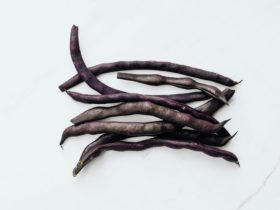We cannot imagine Easter without several delicacies that are inseparably linked to it. However, few people know where they came from, their origin, and what they should symbolize.
Easter lamb
Its history is even older than Christian history. We must return to ancient Jewish traditions when the Lord led God’s flock to find its origins. Jews sacrifice the Passover lamb yearly during Easter to remember their liberation from Egyptian captivity. Christians took the symbol one step further. They consider Jesus Christ as the lamb sacrificed for the world’s salvation.
Even during the Middle Ages, the roasted lamb was eaten on Easter, but the subsequent decrease in lamb meat led to its replacement with a sweet form. The spread of the Easter lamb in its modern sense only occurred in the 19th century.
Our country’s most common traditional Easter lamb is a sponge cake, sometimes with chocolate icing. French people can be honored by serving it with caramelized baked apples.
Mazanec
Traditional and one of the oldest types of ceremonial pastry. Interestingly, its history is much older than the tradition of sweet lamb cake, dating back to the 14th century. It was named after the fact that it was baked on White Saturday and was then ceremoniously anointed with holy water at Saturday’s service.
A proper mazanec should be cut at the top into a cross shape. It is prepared from the same leavened dough as Christmas bread. In the past, two types of mazanec were always made. The plain dough was for the household, while the one with raisins or almonds was for guests and the higher classes.
Judas
Another traditional Easter ceremonial pastry. Again, the sweet-leavened pastry was used to make it and to make Mazanec and Christmas bread. However, Judas was baked on Spy Wednesday and eaten on Holy Thursday. They had to have a loop or a noose shape to remind us of Judas’ betrayal and death. They were then spread with honey when eaten.









